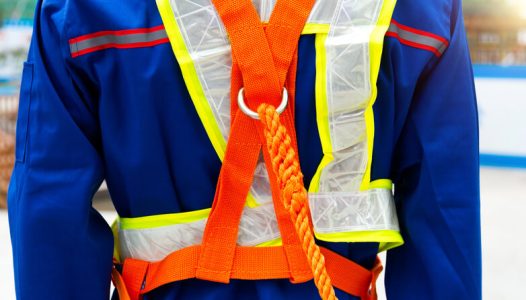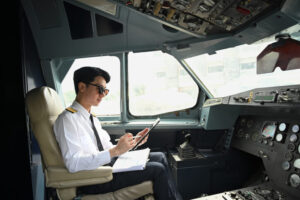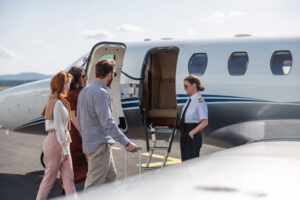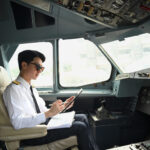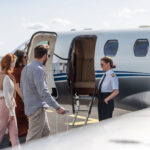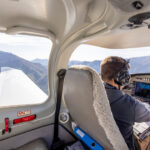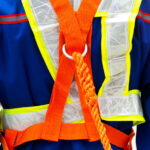Enhancing Aircraft Operation Safety with Personal Protective Equipment
Safety isn’t just a priority in aviation—it’s part of the job. For aircraft operator companies, particularly those under Part 135 regulations, ensuring the well-being of personnel is both a regulatory and ethical responsibility. One of the most effective ways to protect your team from workplace hazards is through proper use and management of Personal Protective Equipment (PPE). Whether working on the ground or in the air, PPE minimizes risks, prevents accidents, and keeps your operations running smoothly.
General Personal Protective Equipment
General PPE forms the first line of defense for employees in high-risk environments. Within aviation operations, workers encounter a variety of hazards, from exposure to hazardous materials to heavy machinery use.
Key PPE items include:
- Safety glasses and goggles to shield eyes from debris, chemicals, or fuel vapors.
- Hearing protection, such as earplugs or earmuffs, to combat excessive noise generated by engines and ground equipment.
- Protective gloves to safeguard hands from cuts, chemical exposure, or burns during maintenance tasks.
- Steel-toed boots for preventing injuries from falling tools or heavy objects.
Equipping personnel with appropriate PPE isn’t enough; regular training should ensure they know when and how to use it effectively. Operators must also maintain PPE in proper condition. Damaged gear can fail when needed most, posing serious risks to the user.
Respiratory Protection Equipment
Aircraft maintenance often involves exposure to hazardous particles, including fumes from fuel, solvents, and paint. Respiratory protection equipment is essential for safeguarding against potentially harmful air contaminants.
Types of respiratory protection used in aviation operations include:
- Disposable respirators for low-level hazards like dust or non-toxic particles.
- Half-mask respirators with replaceable cartridges for use when handling chemicals or during fuel system disassembly.
- Powered air-purifying respirators (PAPRs) for extended or high-risk tasks, providing better filtration and user comfort.
Aircraft operators must conduct regular air quality assessments to determine hazardous material levels and ensure the proper respirators are chosen accordingly. The Occupational Safety and Health Administration (OSHA) mandates a respiratory protection program for workplaces, which should include fit testing, training, and routine inspections of equipment.
Fall Protection Systems
Fall risks are a significant concern in aviation, especially when it comes to inspecting or repairing aircraft on elevated platforms. Whether working from ladders, wing surfaces, or hangar scaffolding, employees must be protected from accidental falls that can result in severe injuries or fatalities.
A robust fall protection system should include:
- Harnesses and safety lanyards for maintaining secure positioning.
- Guardrails and safety barriers on elevated platforms to prevent edge-related accidents.
- Anchorage points designed to handle the maximum force of a fall.
Implementing fall protection in your operations goes beyond acquiring the hardware. It’s critical to train employees on proper use, inspect equipment regularly, and comply with OSHA’s fall protection standards. A single oversight in system upkeep could lead to devastating consequences.
Best Practices for PPE in Aircraft Operations
Consistency and commitment to safety are vital for effective PPE implementation. To help your team maintain optimal protection, consider the following practices:
- Conduct regular hazard assessments to identify risks and PPE requirements.
- Provide comprehensive training to ensure employees understand PPE use and limitations.
- Establish a maintenance and inspection schedule for PPE, replacing worn or damaged items without delay.
- Foster a culture of accountability, encouraging personnel to adhere to safety protocols regardless of time pressure or operational demands.
By investing in proper PPE and training programs, aircraft operator companies not only safeguard their most valuable assets—their people—but also reduce downtime caused by injuries, enhance compliance with industry regulations, and improve overall operational efficiency.
Final Thoughts
The aviation industry has no room for compromise when it comes to safety. Personal Protective Equipment is a vital tool for mitigating risks faced by your personnel daily. By prioritizing general PPE, respiratory protection, and fall protection systems, you create an environment where employees can focus on their work confidently and effectively.
Remember, safety doesn’t happen by accident—it’s a deliberate effort. Equip your team, educate them, and continually assess operations to ensure the highest levels of protection. Only then can you truly soar above the hazards.

